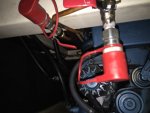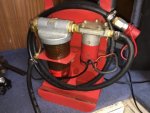Piers
Well-known member
Why do you say "well above the tank's base"?
If the pick up is close to the base, the filter could become blocked quickly leading to a start/stop operation. Plumbed in the way described allows time for everything to be stirred up and filtered bit by bit rather than lump by lump.


